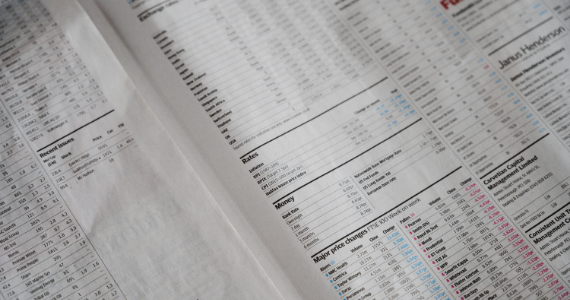Why buy shares?
When people talk about investing in shares (or stocks), they’re usually referring to common shares. These kinds of shares give you the opportunity to join in the success of public companies listed on the Australian Stock Exchange, and as such, they’re an investment that can really grow your investment portfolio.
Because you’re a part-owner of the company that issues your share, it’s pretty simple: For the most part, when the company makes money, you make money. (Conversely, of course, when the company loses money, you may too).
There are a couple of ways you’ll see this part-ownership reflected.
First, the price of each share can increase in value. Not including costs, this means if you buy 50 shares at $10 a share and then the share price increases to $15, you’re now $250 richer.
The company can also choose to issue a dividend to shareholders. Say the issuer of your 50 shares announces a $2 dividend. That means you’ll be paid $100 (which you can use to buy more shares if you wish).

Good to know
Over shorter periods of time (weeks or months), the value of a particular share can fluctuate based on a lot more than the actual performance of the company.
For example, if investors think the company could be headed for tough times—because a competitor releases a new product or because the company hasn’t been growing as fast as everyone expected, for example—the share price may go down. On the other hand, potentially good news about a company can push the share price higher—even if nothing has actually changed.
And of course, the overall performance of the economy and markets will affect share price too.
Over the long term, however, the main determinant of a share’s performance is how successful the underlying company has actually been.
Choosing shares:
There are several ways to categorise shares:
1. Growth & value
Companies generally fall into 1 of 2 categories depending on how they make money for their investors.
Growth companies are in an expansion phase. Any available money they have is likely to be funnelled toward the expansion of their businesses or the development of new products and services. As they grow, the value of their shares increases.
Value companies are relatively established. While they may still be growing, there’s not as much room for the kind of rapid expansion that growth companies pursue. So rather than put all their cash flow into opportunities for development, these companies are more likely to pay dividends.
2. Capitalisation
Companies can also be divided up based on the total value of their shares—their “capitalisation.” Shares are generally considered to be large-, mid-, or small-cap, although at the extremes you may also see references to mega-cap or micro-cap shares.
The boundaries between one grouping and the next aren’t firm, and they change as the overall market value changes. In general, large-cap shares make up about 65% to 75% of the entire market, and mid- and small-cap shares about 10% to 15% each.
The shares of large-cap companies tend to be more stable than those of smaller companies. But smaller companies may have more potential for growth.
3. Sectors
Companies can also be grouped by sector. As with capitalisation, there are several different sector classification systems. Most systems include categories like technology, health care, and energy.
Shares within particular sectors will tend to react in predictable ways to economic conditions, so it’s important to make sure you are adequately diversified and your investments aren’t too concentrated in specific sectors.
For example, when the economy is doing poorly, sectors like information technology, consumer discretionary, and telecommunication services may suffer because people can choose to spend less in these areas.
On the other hand, people must keep spending on things like consumer staples, utilities, and health care, so these sectors may be less affected.
Risks of investing in shares
Remember, although shares might have the potential for higher returns compared to other asset classes like bonds, they also carry higher risk.
Share markets move in cycles, reflecting the underlying strength of the economy, political factors, industry trends and market sentiment. On any given day, interest rate and inflation expectations, company profits, dividends, economic growth figures and the rise or fall of your currency may have an impact on share prices.
That’s why shares are generally most suited to investors who have a longer investment time frame and the ability to ride out any short-term volatility.
If you’re interested in putting an investment strategy in place contact us on Phone 02 9906 6566.
Source: Vanguard March 2022
Reproduced with permission of Vanguard Investments Australia Ltd
Vanguard Investments Australia Ltd (ABN 72 072 881 086 / AFS Licence 227263) is the product issuer. We have not taken yours and your clients’ circumstances into account when preparing this material so it may not be applicable to the particular situation you are considering. You should consider your circumstances and our Product Disclosure Statement (PDS) or Prospectus before making any investment decision. You can access our PDS or Prospectus online or by calling us. This material was prepared in good faith and we accept no liability for any errors or omissions. Past performance is not an indication of future performance.
© 2022 Vanguard Investments Australia Ltd. All rights reserved.
Important:
Any advice or information in this publication is of a general nature only and has not taken into account your personal objectives, financial situation and needs. Because of that, before acting on the advice, you should consider its appropriateness to you, having regard to your personal objectives, financial situation and needs. Past performance is not a reliable guide to future returns. The information in this document reflects our understanding of existing legislation, proposed legislation, rulings etc as at the date of issue. In some cases, the information has been provided to us by third parties. While it is believed the information is accurate and reliable, this is not guaranteed in any way. Opinions constitute our judgement at the time of issue and are subject to change. Neither the Licensee, nor their employees or directors give any warranty of accuracy, nor accept any responsibility for errors or omissions in this document.


